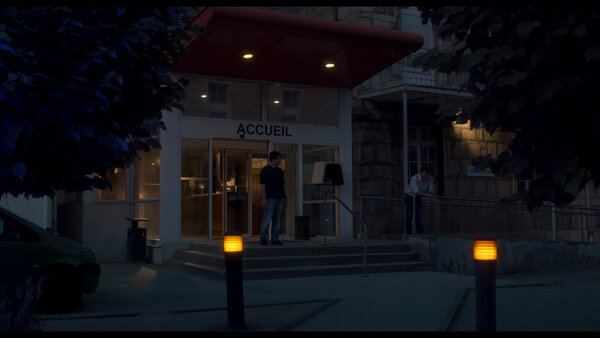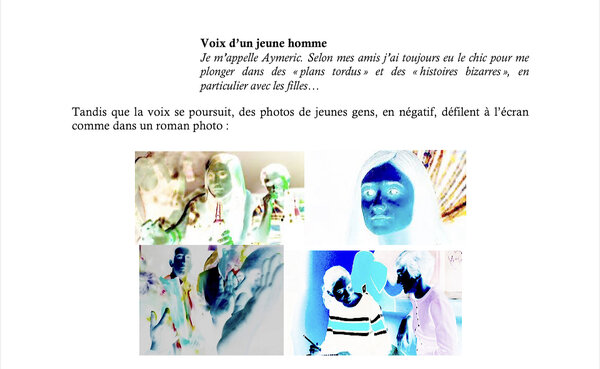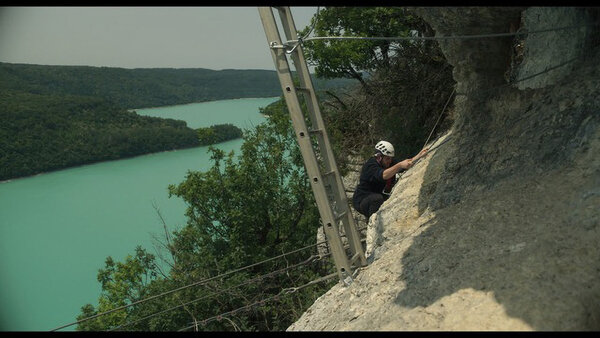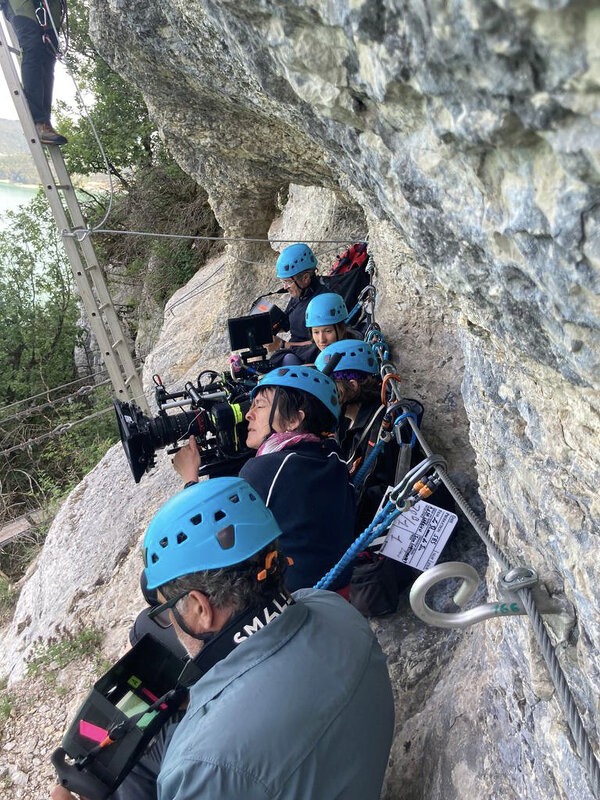Festival de Cannes 2024
Irina Lubtchanksy, AFC, talks about her collaboration with Arnaud and Jean-Marie Larrieu on "Le Roman de Jim"
By Brigitte Barbier for the AFCAymeric meets Florence, a former colleague, by chance at a party in Saint-Claude in the Haut-Jura. She is six months pregnant and single. When Jim is born, Aymeric is there. They spend many happy years together, until the day Christophe, Jim’s biological father, shows up... The start of a melodrama, this also marks the beginning of a fatherhood odyssey.
Starring Karim Leklou, Laetitia Dosch, Sarah Giraudeau, Noée Abita, Andranic Manet, Bertrand Belin.
How did this first collaboration with Arnaud and Jean-Marie Larrieu come about ?
Irina Lubtchansky : I knew them from afar for a long time, along with Annette Dutertre, their editor, and Olivier Mauvezin, their sound engineer, but one day we became closer. I knew that Arnaud shot their films, but they told me that since Tralala, Arnaud was less involved with the camera. I was all the more delighted to shoot with them for Le Roman de Jim, whose script I really liked.
Was the shotlist, lighting, and visual universe of the film discussed with the two directors ?
IL : Before filming, the three of us discussed the artistic and technical aspects of the film, the format and how the image would evolve over the course of the story. They told me that they liked end of the day light, so the sequences shot on location were aimed to be during those hours.
On set, I mainly discussed framing and lighting with Arnaud during set-up. They’re used to not planning their script breakdowns. It’s very stimulating ; you have to adapt as the sequences progress and trust them, especially as daylight fades. The camera placement and movements were decided during the rehearsals.
We exchanged a lot about the outdoor sequence images, they love the late-day light and early mornings. So, I thought a lot about organizing the work schedule for these particular moments of light. And we also used the “magic hour”, or “American twilight” techniques [Laughs].

There is also a sequence of scenes where we cross these ephemeral lights...
IL : Yes, absolutely. The one at night with Olivia (Sarah Giraudeau). The scene begins with the couple swimming in the lake in the afternoon. As the sun goes down, they cook trout on a wood fire, during twilight. Then they dance and make love as night falls. In the next sequence, we find them elsewhere, at dawn. Everything was arranged so that we would shoot this twilight sequence (rather than a real dawn). But Arnaud wanted to do a 20-metre tracking shot ; that’s when you have to adapt, when the unexpected happens ! As I’m always ahead of schedule, I had a bit of leeway, and it was summer so we had a bit more daylight when the sun disappeared. But I had to light the faces a bit with battery-powered SL1s so that I could close the aperture when it was a bit too bright and maintain the same contrast throughout the sequence.
Another "magic hour" moment is very beautiful, when Aymeric (Karim Leklou) discovers a man who has just become a father, and realizes that he is also becoming one...
IL : Yes, it was great to use this light for Aymeric’s moment of revelation. We filmed outside the clinic exit when it was still daylight. At the beginning of the sequence, we enhanced all the lighting we wanted to use so we could close the aperture. Then, as the day wore on, Laurent Bourgeat (the gaffer) had to run around to adjust each projector to the falling light and finally do the final shots in the true dusk, with the sky still slightly lit.

Aymeric is a photographer, and the photos, which were processed in a very special way, are magnificent. How did you work on them ?
IL : When I was preparing the film, Jean-Marie gave me a book about the photographer Harry Gruyaert ; whose photos are very colourful. They used them as inspiration for the photos in the film.
Karim Leklou’s character takes a lot of photos but doesn’t have money for prints, so his photos remain as colour negatives. To see them in the film, it was best to show these enlarged negatives with inverted colours. We did tests in the lab, and the effect was more interesting when the photo was slightly over-exposed ; the colours were more saturated. On set, we took the photos with a digital camera with the LUT integrated, so we could see the result directly during shooting.

What were your technical choices to accompany the film over the thirty years or so that the story unfolds ?
IL : For this film, which takes place between 1996 and 2023, I didn’t want the images to reflect a particular era, especially since everything is indicated in the narration.
The lenses I used, Summicron, were very good for the last period (2023) but I found them a little harsh for the part of the film before 2000, so I filtered them with strong Glimmer filters to soften their rendering. I also changed the recording format to a large format (6K) for this last part of the film.
The film was shot mostly with a 25mm lens. We almost exclusively used this focal length, so the characters fit naturally into the scenery and nature, which is very present throughout the film. We get a slightly wider-angle effect using this 25mm in 6K. The few close-ups are shot with a 40mm lens.
The Via Ferrata sequences are impressive. Can you tell us how you shot them ?
IL : I was impressed myself ! I had to lead the team during the location scouting (someone had told the guide that I was scared, but I really wasn’t the only one !) but, against all odds, everything went really well. It’s a vertical ladder that you have to climb slowly... without looking down !
The directors didn’t want too many hand-held shots, so we shot with a mountaineering grip who set up installations in the rock. Everyone in the team had a guide to keep an eye on them, because you gain confidence when filming, and in the heat of the action, you can forget to clip on a carabiner.


What do you take from this first film collaboration with the Larrieu brothers ?
IL : The brothers have a real desire for cinematography, for shots.
The shoot was very pleasant ; they know each other so well that work discussions were very fluid. We were very focused during the shoot, but without forgetting about life around us.
 En
En Fr
Fr





